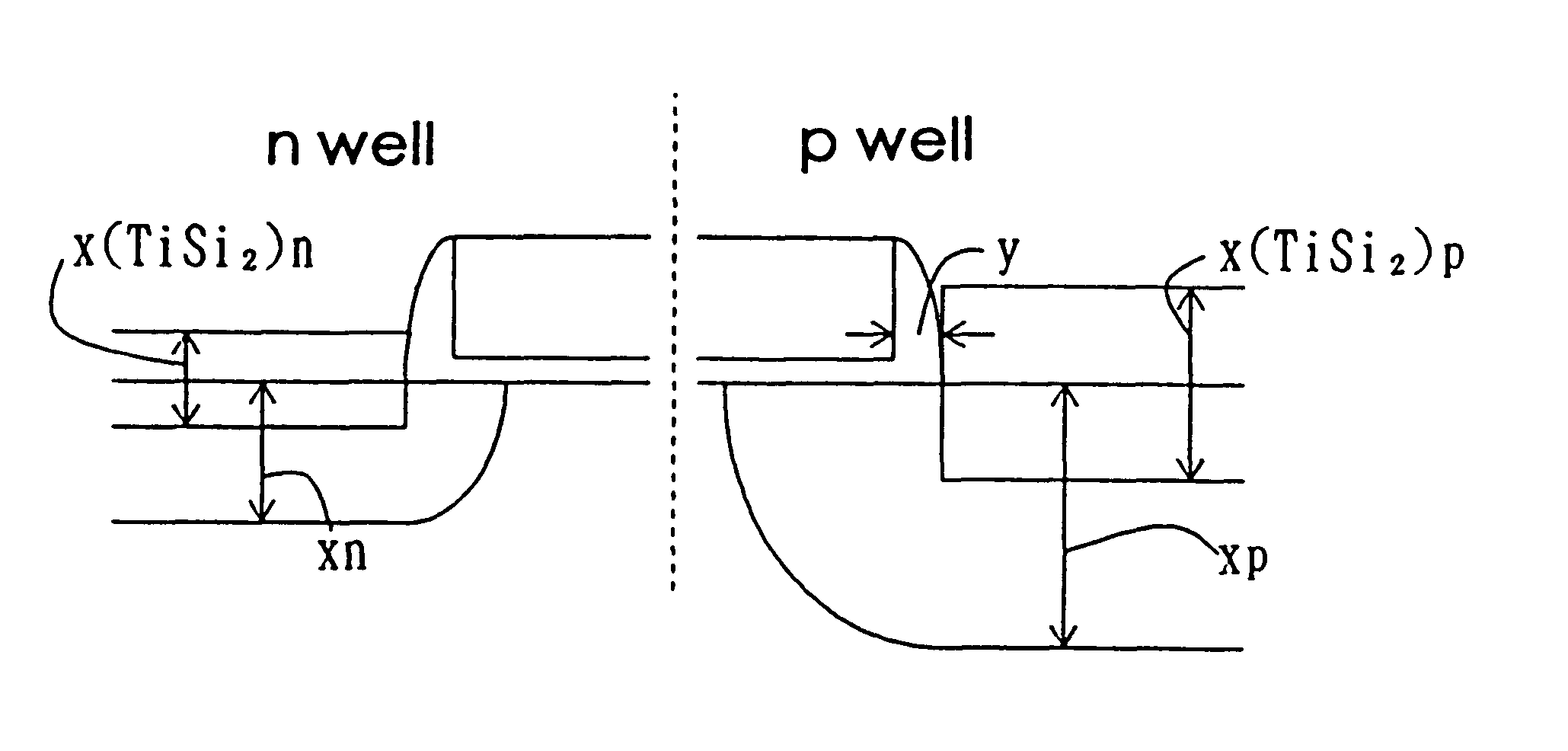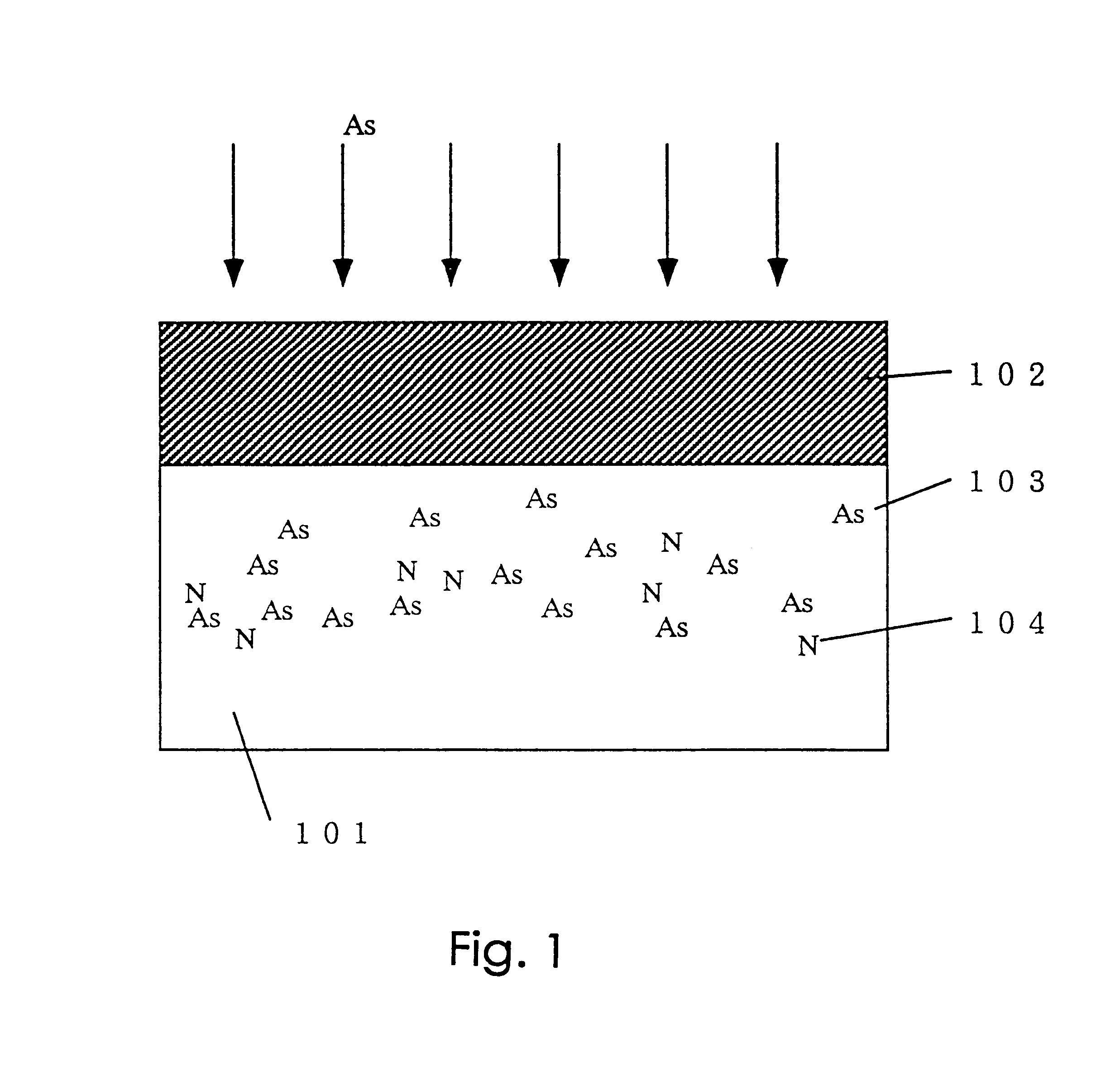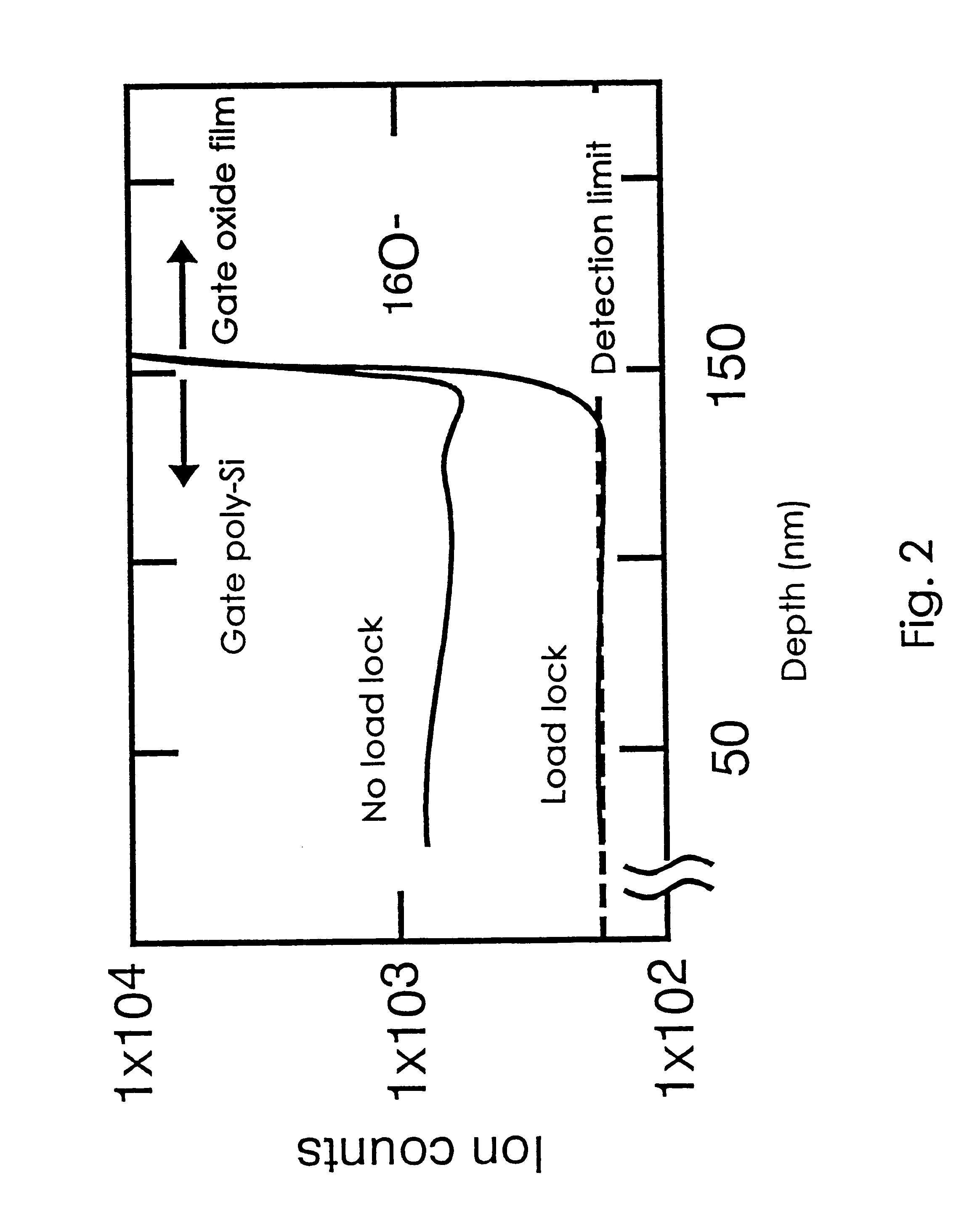Semiconductor device having junction depths for reducing short channel effect
a short-channel effect and junction depth technology, applied in semiconductor devices, radiation-controlled devices, electrical equipment, etc., can solve the problems of short-channel effect, titanium silicide film forming step, and transistor is ap
- Summary
- Abstract
- Description
- Claims
- Application Information
AI Technical Summary
Problems solved by technology
Method used
Image
Examples
example 1
There is illustrated in FIG. 1 a sectional view of a structure according to Example 1 of the present invention.
In Example 1, the surface of a silicon semiconductor substrate 101, before ion implantation, has an oxygen concentration of 1.times.10.sup.18 / cm.sup.3 or less in at least an area where impurity ions are to be implanted.
To realize n oxygen concentration of 1.times.10.sup.18 / cm.sup.3 or less in Example 1, a DZ which is a layer of oxygen-free and defect-free was formed by an IG treatment. The surface of the silicon semiconductor substrate has a structure having a silicon nitride film 102 deposited thereon without a native oxide film (a silicon oxide film) formed therebetween. There existed solely arsenic impurity ions 103 implanted without introducing oxygen atoms and nitride atoms 104 knocked on by the arsenic impurity ions 103 in regions with an oxygen concentration of less than 1.times.10.sup.18 / cm.sup.3 of the silicon semiconductor substrate 101, after implantation of t...
example 2
In Example 2, explanation is made on a method for bringing the oxygen concentration to 1.times.10.sup.18 / cm.sup.3 or below in a polysilicon film such as for a gate electrode, though in Example 1 the DZ was formed oxygen-free and defect-free by the IG treatment.
To realize a polysilicon film with an oxygen concentration of 1.times.10.sup.18 / cm.sup.3 or less, a film was formed by using an LP-CVD apparatus having a preparatory evacuation chamber, a load lock chamber, and a deposition furnace connected with carrier system nitrogen-purged. The method of using the LP-CVD (liquid-phase chemical vapor deposition) apparatus is described below.
A semiconductor wafer immediately after being formed with a gate oxide film was accommodated in the preparatory evacuation chamber, and then the preparatory evacuation chamber was evacuated to a pressure of approximately 10.sup.-1 Pa. Thereafter, nitrogen was introduced into the preparatory evacuation chamber, and the semiconductor wafer was transporte...
example 3
FIGS. 3(a)-3(d) and FIGS. 4(e) and 4(f) are sectional views showing steps for fabricating the semiconductor device according to the invention.
First, silicon semiconductor substrate 30 of a p-type was subjected to an IG treatment form a DZ 302 which has a surface free of oxygen and defects, as shown in FIG. 3(a). Then, a silicon nitride film 303 was formed to a thickness of approximately 5-30 nm over the surface of the silicon semiconductor substrate by the use of an LP-CVD apparatus. The LP-CVD apparatus is provided with a cassette chamber, a load-lock chamber, and a deposition furnace, as shown in FIG. 3(b). Arsenic ions as an impurity were implanted through the silicon nitride film 303 into the silicon semiconductor substrate, as shown in FIG. 3(c), under conditions of a dose of approximately 5.times.10.sup.14 -5.times.10.sup.15 / cm.sup.2 with an implant energy of 40 keV-60 keV. On this occasion, nitride atoms 305 besides arsenic ions 304 were introduced through knocking-on into t...
PUM
 Login to View More
Login to View More Abstract
Description
Claims
Application Information
 Login to View More
Login to View More - R&D
- Intellectual Property
- Life Sciences
- Materials
- Tech Scout
- Unparalleled Data Quality
- Higher Quality Content
- 60% Fewer Hallucinations
Browse by: Latest US Patents, China's latest patents, Technical Efficacy Thesaurus, Application Domain, Technology Topic, Popular Technical Reports.
© 2025 PatSnap. All rights reserved.Legal|Privacy policy|Modern Slavery Act Transparency Statement|Sitemap|About US| Contact US: help@patsnap.com



